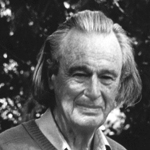
Margaret Mead was an American cultural anthropologist, author and speaker, who appeared frequently in the mass media during the 1960s and the 1970s.

The sexual revolution, also known as the sexual liberation, was a social movement that challenged traditional codes of behavior related to sexuality and interpersonal relationships throughout the developed Western world from the late 1950s to the early 1970s. Sexual liberation included increased acceptance of sexual intercourse outside of traditional heterosexual, monogamous relationships, primarily marriage. The legalization of the pill as well as other forms of contraception, public nudity, pornography, premarital sex, homosexuality, masturbation, alternative forms of sexuality, and abortion all followed.

Jealousy generally refers to the thoughts or feelings of insecurity, fear, and concern over a relative lack of possessions or safety.
A sexual norm can refer to a personal or a social norm. Most cultures have social norms regarding sexuality, and define normal sexuality to consist only of certain sex acts between individuals who meet specific age criteria, nonconsanguinity, race/ethnicity, and/or social role and socioeconomic status.

Infidelity is a violation of a couple's emotional or sexual exclusivity that commonly results in feelings of anger, sexual jealousy, and rivalry.
Open marriage is a form of non-monogamy in which the partners of a dyadic marriage agree that each may engage in extramarital sexual or romantic relationships, without this being regarded by them as infidelity, and consider or establish an open relationship despite the implied monogamy of marriage. There are variant forms of open marriage such as swinging and polyamory, each with the partners having varying levels of input into their spouse's activities.
An open relationship is an intimate relationship that is sexually or romantically non-monogamous. An open relationship generally indicates a relationship where there is a primary emotional and intimate relationship between partners, who agree to at least the possibility of sexual or emotional intimacy with other people. The term "open relationship" is sometimes used interchangeably with the term polyamory, but the two concepts are not identical.
Group marriage or conjoint marriage is a marital arrangement where three or more adults enter into sexual, affective, romantic, or otherwise intimate short- or long-term partnerships, and share in any combination of finances, residences, care or kin work. Group marriage is considered a form of polygamy. While academic usage has traditionally treated group marriage as a marital arrangement, more recent usage has expanded the concept to allow for the inclusion of non-conjugal unions. Colloquial usage of group marriage has also been associated with polyamory and polyamorous families.

Non-monogamy is an umbrella term that describes a relationship arrangement where one or more partners are not sexually and/or romantically exclusive to each other. Monogamy and non-monogamy are not strictly binary categories, but rather exist on a continuum encompassing various degrees of exclusivity and openness - at one end of this continuum lie strictly monogamous relationships, while at the other end are openly non-exclusive arrangements with numerous nuanced forms of varying degrees of openness in between. Non-monogamous relationships have been practiced across cultures and throughout history, reflecting diverse social norms, legal frameworks, and personal preferences.

David Michael Buss is an American evolutionary psychologist at the University of Texas at Austin, researching human sex differences in mate selection. He is considered one of the founders of evolutionary psychology.

Coming of Age in Samoa: A Psychological Study of Primitive Youth for Western Civilisation is a 1928 book by American anthropologist Margaret Mead based upon her research and study of youth – primarily adolescent girls – on the island of Taʻū in American Samoa. The book details the sexual life of teenagers in Samoan society in the early 20th century, and theorizes that culture has a leading influence on psychosexual development.

Sexual jealousy is a special form of jealousy in sexual relationships, based on suspected or imminent sexual infidelity. The concept is studied in the field of evolutionary psychology.
Human male sexuality encompasses a wide variety of feelings and behaviors. Men's feelings of attraction may be caused by various physical and social traits of their potential partner. Men's sexual behavior can be affected by many factors, including evolved predispositions, individual personality, upbringing, and culture. While most men are heterosexual, and attracted only to women, there are minorities of homosexual men and varying degrees of bisexual men.
The type, functions, and characteristics of marriage vary from culture to culture, and can change over time. In general there are two types: civil marriage and religious marriage, and typically marriages employ a combination of both. Marriages between people of differing religions are called interfaith marriages, while marital conversion, a more controversial concept than interfaith marriage, refers to the religious conversion of one partner to the other's religion for sake of satisfying a religious requirement.
The following outline is provided as an overview of and topical guide to interpersonal relationships.
A cultural universal is an element, pattern, trait, or institution that is common to all known human cultures worldwide. Taken together, the whole body of cultural universals is known as the human condition. Evolutionary psychologists hold that behaviors or traits that occur universally in all cultures are good candidates for evolutionary adaptations. Some anthropological and sociological theorists that take a cultural relativist perspective may deny the existence of cultural universals: the extent to which these universals are "cultural" in the narrow sense, or in fact biologically inherited behavior is an issue of "nature versus nurture". Prominent scholars on the topic include Emile Durkheim, George Murdock, Claude Lévi-Strauss, and Donald Brown.

John Derek Freeman was a New Zealand anthropologist known for his criticism of Margaret Mead's work on Samoan society, as described in her 1928 ethnography Coming of Age in Samoa. His attack "ignited controversy of a scale, visibility, and ferocity never before seen in anthropology."
Monogamy is a relationship of two individuals in which they form a mutual and exclusive intimate partnership. Having only one partner at any one time, whether that be for life or whether that be serial monogamy, contrasts with various forms of non-monogamy. More generally, the term is used to describe the behavioral ecology and sexual selection of animal mating systems, referring to the state of having only one mate at any one given time. In a human cultural context, monogamy typically refers to the custom of two individuals, regardless of orientation, committing to a sexually exclusive relationship.
The Mundugumora.k.a.Biwat are an indigenous people of Papua New Guinea. They live on the Yuat River in East Sepik Province, Papua New Guinea, and speak the Mundugumor language.

In evolutionary psychology and behavioral ecology, human mating strategies are a set of behaviors used by individuals to select, attract, and retain mates. Mating strategies overlap with reproductive strategies, which encompass a broader set of behaviors involving the timing of reproduction and the trade-off between quantity and quality of offspring.











